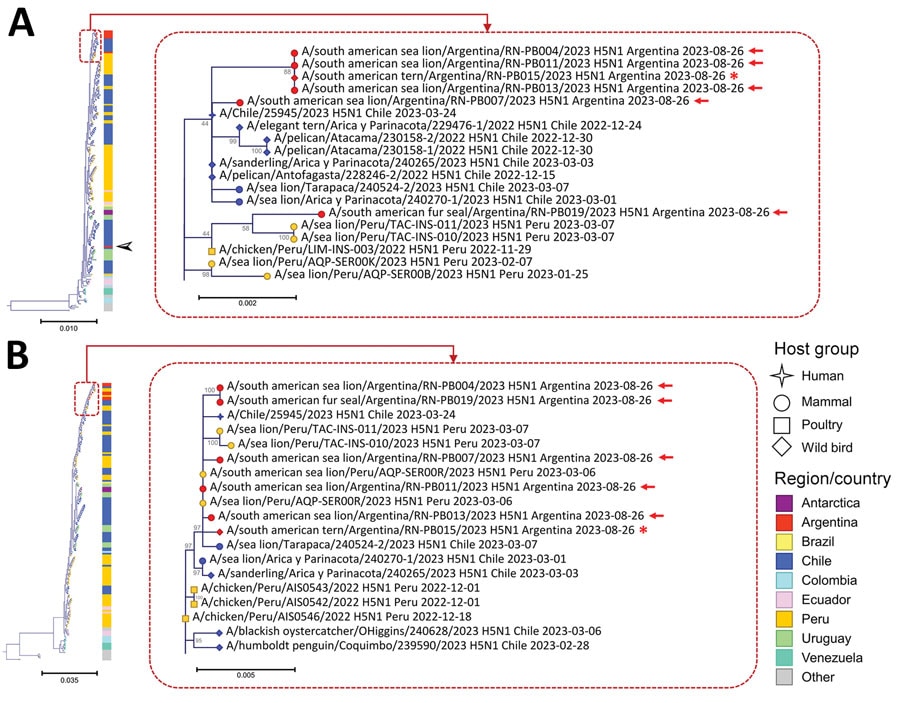Volume 30, Number 4—April 2024
Research Letter
Highly Pathogenic Avian Influenza A(H5N1) Viruses from Multispecies Outbreak, Argentina, August 2023
Figure

Figure. Maximum-likelihood trees for hemagglutinin (A) and polymerase basic 2 (B) gene segments evaluated in study of highly pathogenic avian influenza A(H5N1) in Argentina compared with reference strains from other countries in South America. Tree areas have been enlarged at right to show detail. Red arrows indicate virus from marine mammals in Argentina; red asterisk indicates virus from a tern in Argentina. Black arrowhead along full tree in panel A indicates the hemagglutinin sequence from the first detection of HPAI H5N1 in a wild goose in Argentina. Node shape represents host group, and node color (and bars adjacent to trees) represents the region/country. Branch lengths are drawn proportionally to the extent of changes. Values adjacent to nodes represent bootstrap support >40. Scale bars indicate nucleotide substitutions per site.